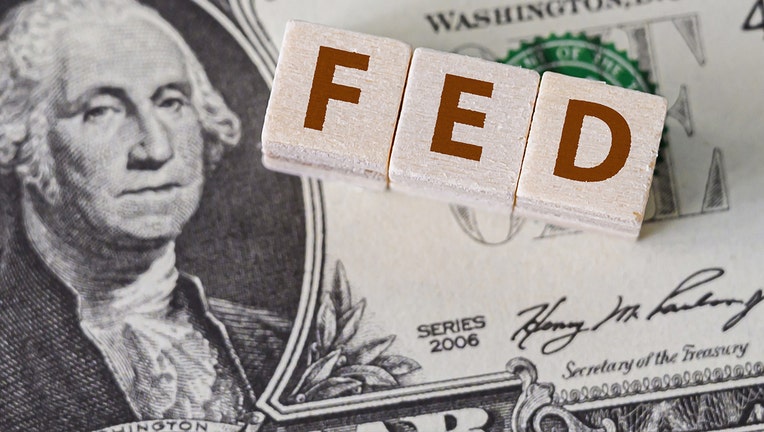Federal Reserve keeps rates low — how your mortgage refinance is impacted

Homeowners should consider refinancing their mortgage to take advantage of the lower Federal funds rate. (iStock)
Until other economic factors show signs of consistent recovery from the coronavirus pandemic’s impact, the Federal Reserve has decided that the federal funds rate will remain unchanged. If you’re considering a mortgage refinance, now may be a great time to take advantage of the low federal funds rate.
All regional branch banks are legally required to maintain a minimum cash limit to ensure that customers can readily make withdrawals. To meet this limit, banks will sometimes borrow money from other banks; a funds rate is the interest rate that the borrowing bank pays to the loaning bank. A lower Fed funds rate often leads to lower prime rates for consumer loans, including mortgage loans.
Are you interested in learning more about refinancing your mortgage this year? Visit Credible to get in touch with experienced loan officers who will answer all of your questions.
Do Federal Reserve rates affect mortgage rates?
The Federal Reserve cut interest rates by a full percentage point in March of 2020, lowering the federal funds rate to a range of 0 to 0.25%. These historically low rates have not reached this level since the 2008 financial crisis. When the federal funds rate decreased, it caused interest rates on loans, savings accounts, and credit cards to fall as well.
Typically, these lower rates have a stronger impact on adjustable-rate mortgages and home equity lines of credit, whereas fixed-rate mortgages are less affected by the federal funds rate. Looking at the trend line of mortgage rates, there has been a steady downward trend since the onset of the pandemic.
For instance, March 19th, 2020, held average mortgage rates at 3.65%. By August 6th, 2020, rates hit a low of 2.88% followed by 2.65% on January 7th, 2021. Though some days do see a slight increase in tenths or hundredths of a percentage, the data generally shows that rates have continued to steadily decline during 2020 and throughout much of 2021, thus far.
You can explore your mortgage refinance options in minutes without leaving home. Visit Credible to compare rates and lenders, and get prequalified today.
What is the 2021 forecast for mortgage rates?
It’s unlikely that any low-interest rates will stay at a minimal level forever, including mortgage rates. However, the pandemic has substantially impacted the country’s economy. Because the United States is still facing dramatic financial impacts from the coronavirus pandemic, the Federal Reserve plans to keep lower federal funds rates through 2023.
What are today’s mortgage rates?
As of the time of reporting, mortgage rates are:
- 30Y FRM: 3.13%
- 15Y FRM: 2.42%
- 5/1 ARM: 2.92%
Although rates have risen since the beginning of 2021, this is not a cause for concern. An increase in purchasing or refinancing demand is likely the cause for the slight increase. However, it’s projected that the rise in mortgage rates will be smaller comparatively over the next few months. With the Fed committed to keeping the funds rate low for the next two years, now is an ideal time for a homeowner to seriously consider refinancing their mortgage.
With low mortgage rates, you may be able to save a significant amount of money per year. You can use an online mortgage refinance calculator to quickly determine your new monthly costs.
After determining your potential savings, take the next steps. Visit Credible to view loan options across multiple lenders with fewer forms to fill out.
Is it worth refinancing for 1%?
Mortgage rates may be at historic lows, but some homeowners wonder if this decrease results in substantial savings. Is it worth refinancing your mortgage to lower it by 1 percent? Consider this example:
If you have a $300,000 30-year mortgage loan with a 4.5 percent interest rate, you’ll pay a total of $247,220 in interest alone. However, if the same 30-year loan featured a 3.5 percent interest rate, your total interest expense would be $184,968. The difference in monthly expense is $173 or $62,252 over the full loan term.
Of course, any homeowner should try to find the best rates available — even if one lender insists that they have the lowest mortgage refi rates. Keep in mind that a refinance is technically a new loan which means additional fees may apply.
Before deciding to refinance your mortgage, first shop around and compare rates with multiple lenders. You can easily compare rates and lenders with Credible’s free online tool which will display prequalified rates in only three minutes.
Have a finance-related question, but don't know who to ask? Email The Credible Money Expert at moneyexpert@credible.com and your question might be answered by Credible in our Money Expert column.

